There are some buildings in the world that people love to hate, and Boston City Hall has been in the proverbial firing line more than most down the years. Completed in 1968, Kallmann, McKinnell and Knowles’s imposing concrete landmark has been referred to as the “World’s Ugliest Building” by countless publications, from the Boston Globe to the Telegraph.
Despite this dubious honor, the Brutalist giant of Massachusetts has gained something of a cult following among architects and design enthusiasts, with many defending the principles upon which it was built, if not its functionality as a civic hub. Nonetheless, the building has not managed to shake its reputation as an architectural disaster — until now.
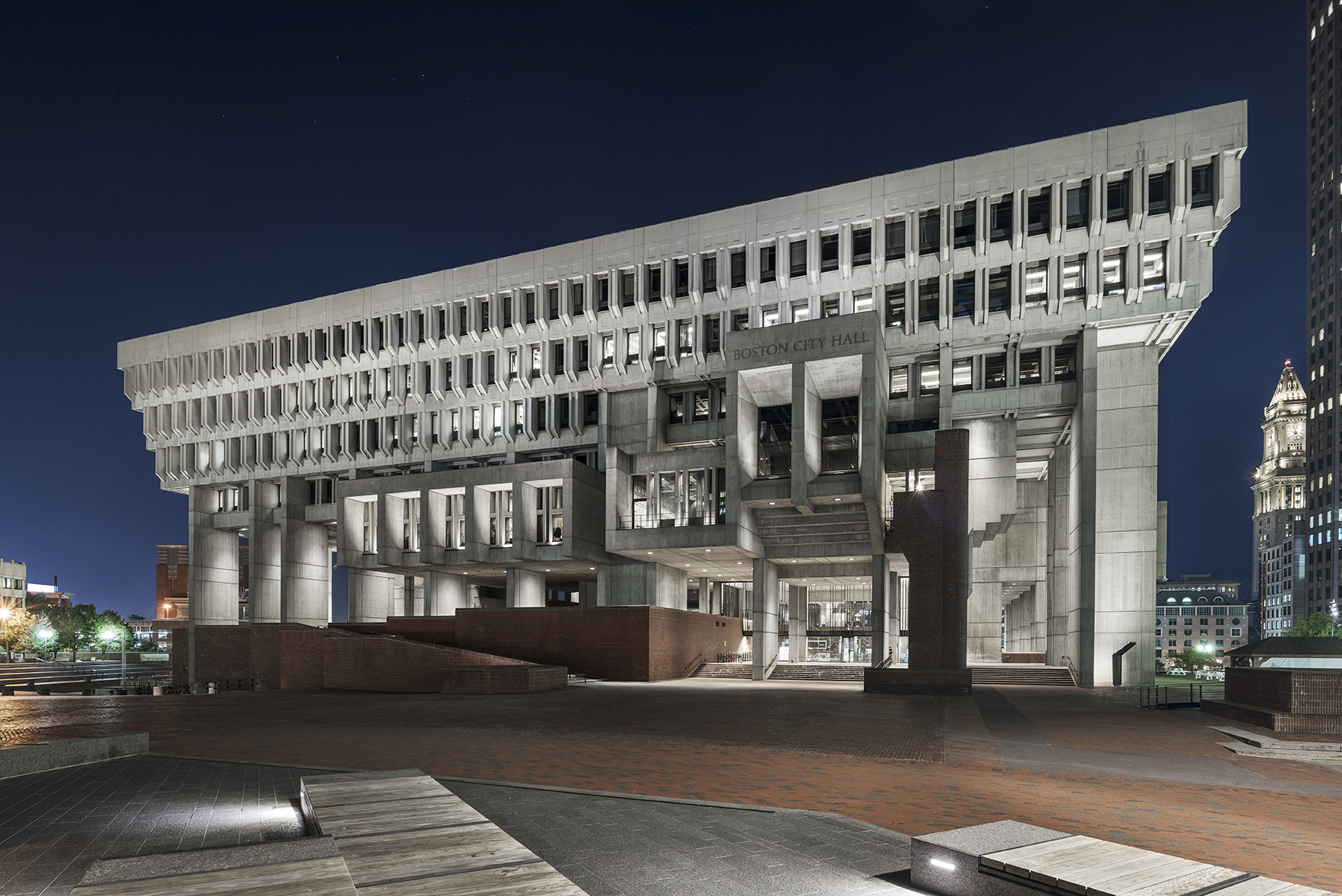
A new renovation of Boston City Hall has scooped a prestigious A+Award, coming out on top with the jurors in the Architecture +Preservation category. The accolade constitutes a remarkable turnaround for a building that, together with its severely underutilized plaza, ranked among the most hated public complex in America. Who is behind the renaissance of this long-reviled project? The designers at local firm Utile, Inc.
“This transformation of Boston City Hall sought to drastically transform the building’s physical, ideological and emotional presence within the hearts and minds of the citizenry,” explained the architects. To pull off such an ambitious task, it may have been tempting to erase much of the original structure, embedded as it is with the distain of large swathes of the local populus. However, the architects resisted the urge, opting for a subtle approach.
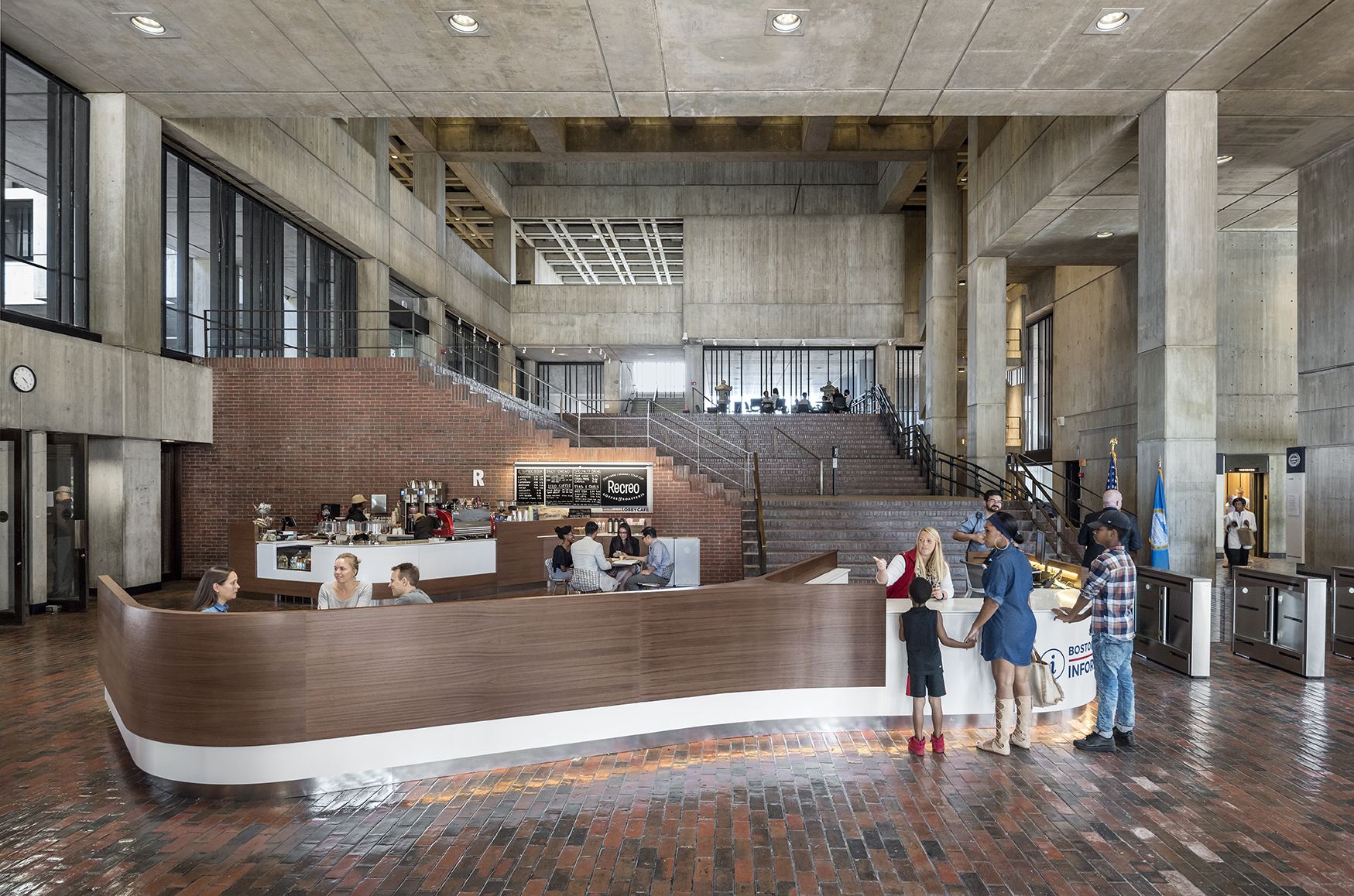
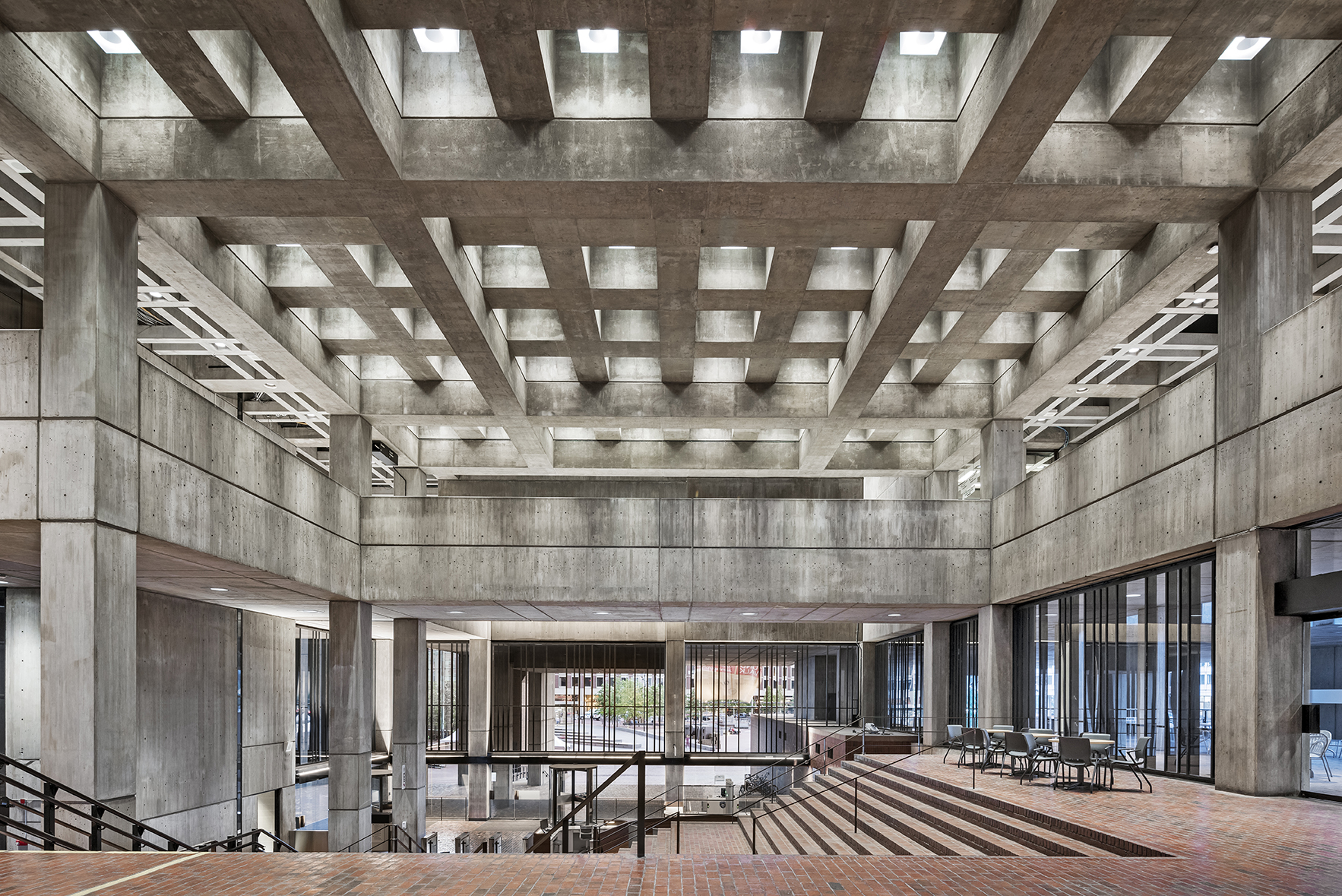
Utile aimed to transform the building’s public areas not so much by changing the existing building, but by “accentuating its significant features, and adapting it to changing programs.” This involved the simplification of spaces that have been complicated by ever-changing technology and security requirements for the building over the years.
Utile undertook a fundamental redesign of the security sequence itself, as well as improving navigation through new wayfinding and adding a coffee kiosk and comfortable seating for visitors. They also redesigned the permitting, licensing, and ticketing transaction windows that residents visit for increased efficiency, clarity and comfort.
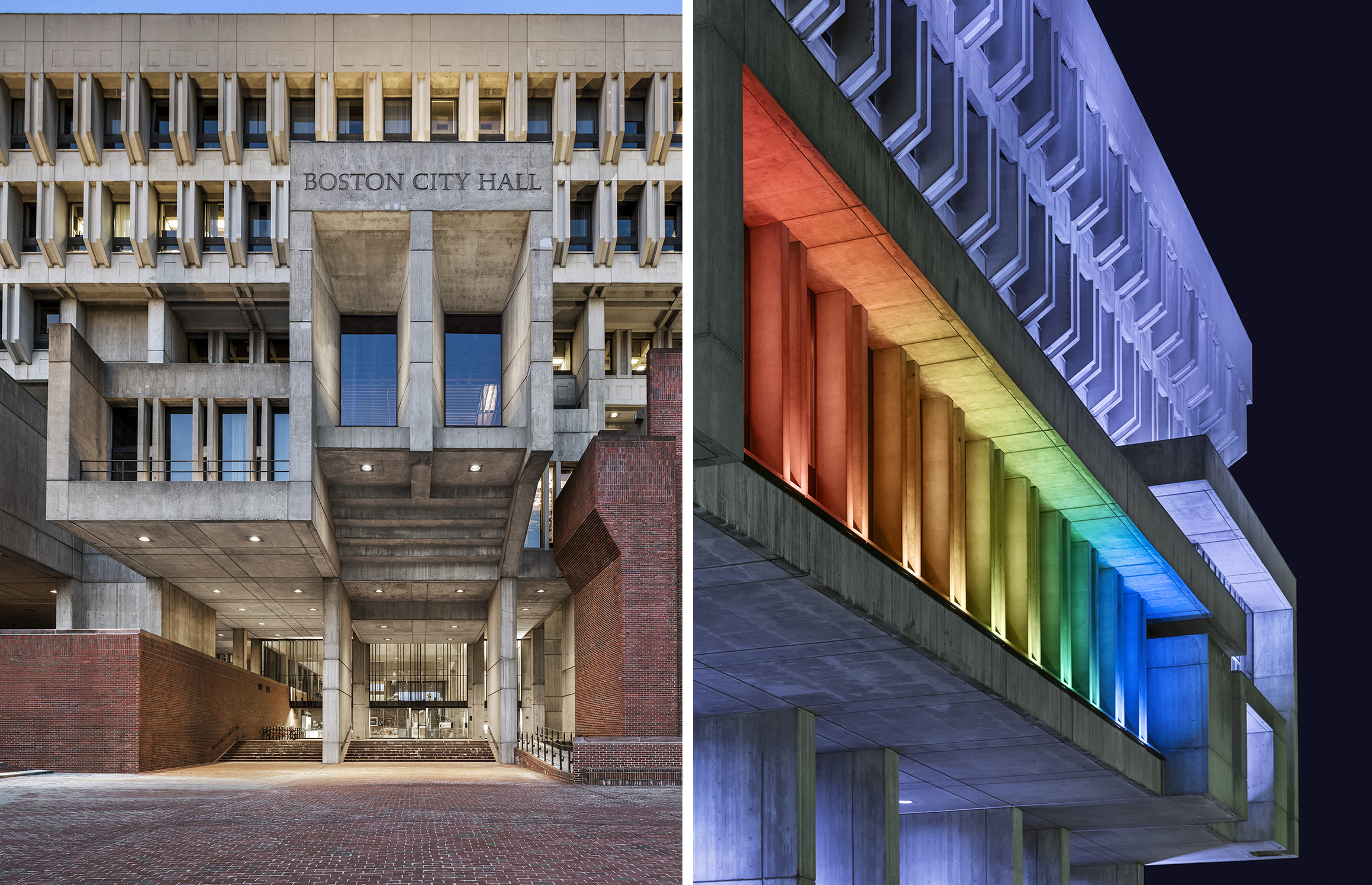
Lighting design played a vital role in improving both the appearance and functionality of the public realm throughout the complex Utile removed the unsightly flood lights that had been added to the building over the years and overhauled the non-functioning lighting elsewhere in the scheme.
“The new lighting plan uses LED technology to celebrate the building’s architecture and restore its original design intent of civic aspiration and monumentality,” explained the architects. These energy-efficient LEDs incorporate color-changing functionality, giving them the flexibility to adapt to the building’s evolving programmatic needs, while also meeting the City’s sustainability goals.
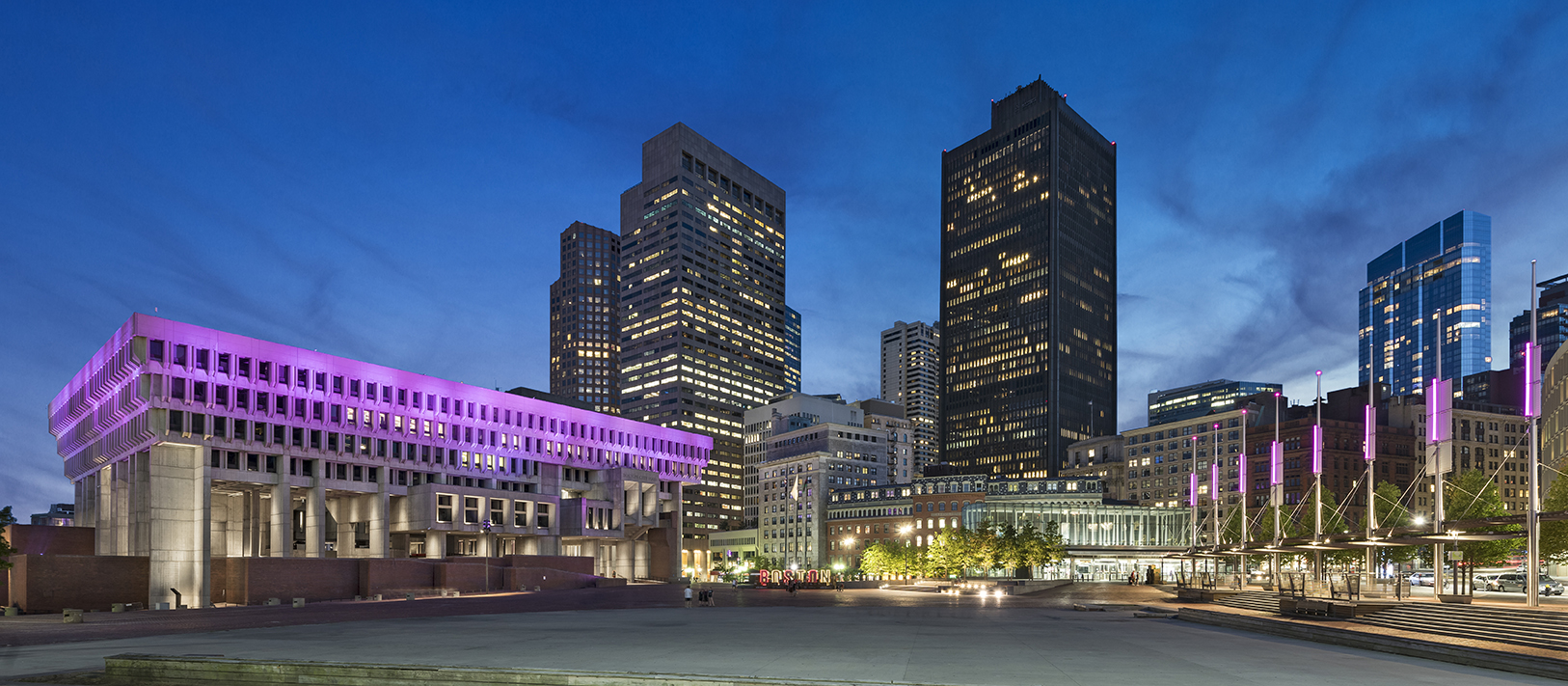
A series of seemingly simple improvements have fundamentally changed not only the aesthetics of Boston City Hall, but also its atmosphere. By removing unsightly modern additions and applying an astute lighting strategy, the original Brutalist vision for the building has become legible again. This will delight the architectural purists that have defended the building down the years, while appeasing those that have leveled harsh criticism at the structure.
Thanks to the work of Utile, the “World’s Ugliest Building” may have permanently relinquished its infamous title. On the positive side, after more than 50 years, the public might just learn to love it for the very first time.
Hit the button below to see every A+Award winner and finalist in this year’s incredible competition:
See the 2019 A+Award-Winning Projects
All photographs by Anton Grassl, courtesy Utile, Inc.









